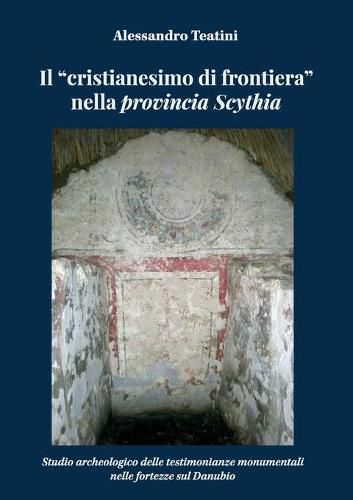Readings Newsletter
Become a Readings Member to make your shopping experience even easier.
Sign in or sign up for free!
You’re not far away from qualifying for FREE standard shipping within Australia
You’ve qualified for FREE standard shipping within Australia
The cart is loading…






This title is printed to order. This book may have been self-published. If so, we cannot guarantee the quality of the content. In the main most books will have gone through the editing process however some may not. We therefore suggest that you be aware of this before ordering this book. If in doubt check either the author or publisher’s details as we are unable to accept any returns unless they are faulty. Please contact us if you have any questions.
The defensive system of the lower danubian limes in late antiquity was structured within provincia Scythia in an advanced line, corresponding to the last course of the Danube, and in a more backward one hinged on large fortified towns, which at least from Zaldapa to the south reached as far as Noviodunum to the north, passing through Tropaeum Traiani and Ibida, but also through minor fortifications such as Ulmetum and Vicus Bad(---). Here we intend to concentrate our attention in particular on the fortresses of provincia Scythia which guarded the defensive line organized along the river, in order to define the characteristics of the Christianity on this border of the empire through the analysis of the archaeological record found in the settlements which first faced the burden of the defense of the limes, subjected to continuous pressure especially in the last period of its history. This analysis will be based primarily on monumental evidences, starting with the buildings of the Christian form of worship, which, more than other findings, give the measure of the presence of organized Christian communities and which will be studied in their topographical organization and in their architectural characteristics, then considering the structures of the funerary framework, where they actually exist; the inscriptions and the categories of the movable finds most indicative for this research will be examined by reuniting them, where possible, with their original structural contexts. The picture that emerges from the so far known archaeological record seems essentially functional to the communities that inhabited these settlements, in which the military element obviously played a primary role, while the evangelizing impulse, addressed also to the territories beyond the limes, was perhaps entrusted to the initiative of the important centers located in Moesia Secunda or in the more backward area to the east of the Danube.
$9.00 standard shipping within Australia
FREE standard shipping within Australia for orders over $100.00
Express & International shipping calculated at checkout
This title is printed to order. This book may have been self-published. If so, we cannot guarantee the quality of the content. In the main most books will have gone through the editing process however some may not. We therefore suggest that you be aware of this before ordering this book. If in doubt check either the author or publisher’s details as we are unable to accept any returns unless they are faulty. Please contact us if you have any questions.
The defensive system of the lower danubian limes in late antiquity was structured within provincia Scythia in an advanced line, corresponding to the last course of the Danube, and in a more backward one hinged on large fortified towns, which at least from Zaldapa to the south reached as far as Noviodunum to the north, passing through Tropaeum Traiani and Ibida, but also through minor fortifications such as Ulmetum and Vicus Bad(---). Here we intend to concentrate our attention in particular on the fortresses of provincia Scythia which guarded the defensive line organized along the river, in order to define the characteristics of the Christianity on this border of the empire through the analysis of the archaeological record found in the settlements which first faced the burden of the defense of the limes, subjected to continuous pressure especially in the last period of its history. This analysis will be based primarily on monumental evidences, starting with the buildings of the Christian form of worship, which, more than other findings, give the measure of the presence of organized Christian communities and which will be studied in their topographical organization and in their architectural characteristics, then considering the structures of the funerary framework, where they actually exist; the inscriptions and the categories of the movable finds most indicative for this research will be examined by reuniting them, where possible, with their original structural contexts. The picture that emerges from the so far known archaeological record seems essentially functional to the communities that inhabited these settlements, in which the military element obviously played a primary role, while the evangelizing impulse, addressed also to the territories beyond the limes, was perhaps entrusted to the initiative of the important centers located in Moesia Secunda or in the more backward area to the east of the Danube.